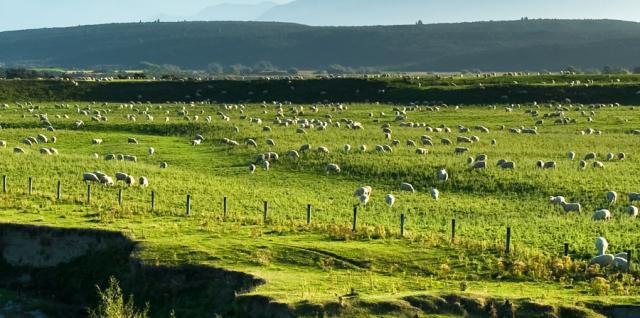This week B+LNZ, in collaboration with AgResearch and dnature, hosted a webinar to provide valuable insights into the Facial Eczema Tolerance Test currently in development as part of the broader Eliminating Facial Eczema Impacts (EFEI) programme.

This webinar served as an update for farmers, particularly breeders, on the progress toward developing an affordable, accurate, and animal welfare-friendly FE tolerance test. The goal is to tell the difference between animals that are susceptible to FE and those that are not using a blood or tissue sample.
Facial Eczema is associated with a toxin producing fungus resulting in liver damage, and in some cases severe sensitivity to sunlight. Economic losses to the sheep, beef, dairy and deer sectors are estimated at $332 million annually.
“A key impact of FE is due to its sub-clinical effects, that’s where farmers can’t see any damage occurring but the hidden signs of the disease are present and can cause substantial harm.” says Suzi Keeling, B+LNZ’s Sector Science Strategy Manager.
Keeling emphasised the importance of this test. "We are eager for its implementation, but thorough and proper research and validation is necessary, as any new test could impact current FE tolerance methods and outcomes. We want to get this right," she said.
Currently, the in-vivo (inside the animal) methods for determining FE tolerance are unsustainable, prompting the search for alternative, more accessible approaches that minimise animal welfare impacts.
Axel Heiser, Principal Scientist at AgResearch, discussed the challenging scientific work involved in developing the tolerance test for sheep. He noted though, that success with sheep could pave the way for effective tests for other ruminants, such as cattle.
Despite the complexities of developing an affordable and accurate test, progress has been made, with two candidate biomarkers identified that could potentially distinguish between tolerant and susceptible sheep. The next steps, being led by John Mackay at dnature, involve transitioning the markers to a test that a commercial laboratory could run followed by large-scale validation testing. If transitioning the test is unsuccessful, alternative options will be explored.
Warwick Lissaman, a member of B+LNZ’s Farmer Research Advisory Group (FRAG), shared his takeaways from the webinar. "FE has typically been a North Island and northern Marlborough problem. However, what we know is that outbreaks can occur when conditions are right in a much wider geographical area. An outbreak in a naive flock could be a disaster, so it makes sense to be prepared and have tools at the ready.”
“The concept that a low-cost test could be developed to identify the most susceptible animals and remove them from our breeding flocks is something worth chasing.
“Ultimately, we know that forage science will be critical in minimising and/or eliminating the presence of fungal spores, but this is a long game. Genetic progress, being cumulative, is always worth pursuing.”
Cara Brosnahan, B+LNZ’s Principal Advisor Animal Health Research, also provided an update on the broader EFEI programme, explaining that the tolerance test development is one part of the initiative to tackle FE in New Zealand.
Key milestones for the EFEI programme include efforts to differentiate between toxic and non-toxic species of the fungus to better determine risk to livestock, and studying the social impacts of FE on farmers and veterinarians to ensure support for them is in place. Additionally, the Sheep Poo study, involving over 200 farmers, has been invaluable in understanding the occurrence of FE nationwide.
“While uncertainties remain, the commitment to a farm systems approach ensures continued progress in managing FE in New Zealand.,” adds Keeling.
Watch the full webinar.
B+LNZ will provide updates on other research projects in the coming months.